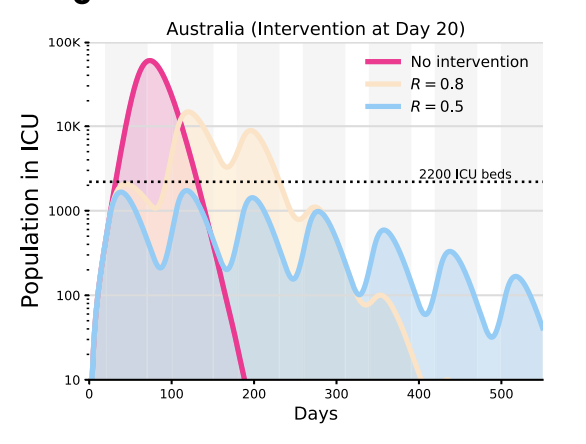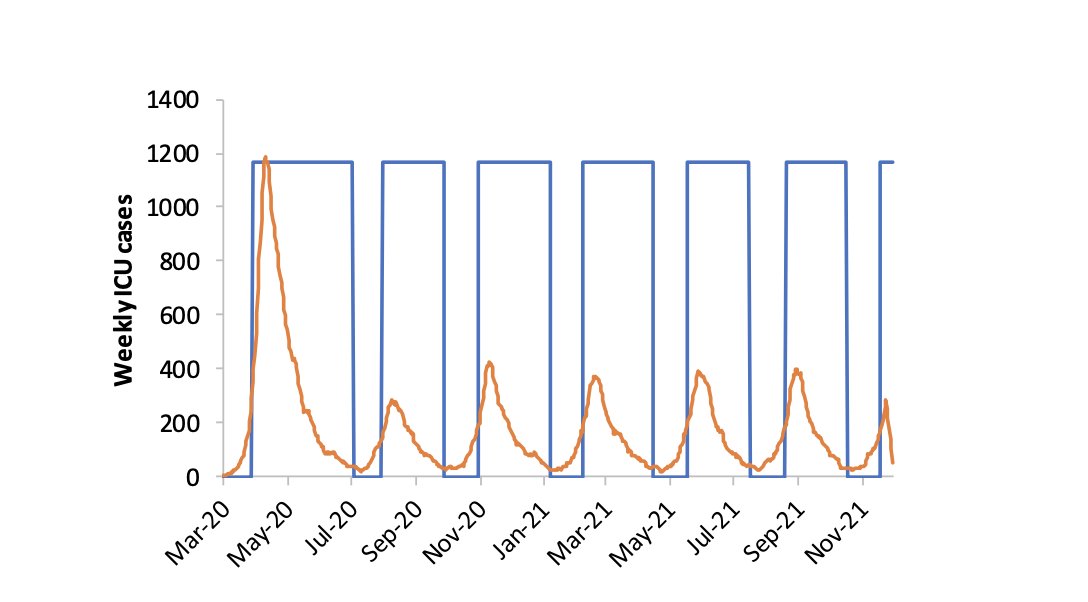The Public Should Ignore Both Skepticism About Testing in Wuhan and Recommendations for Repeated Lockdowns; and Scientists Should Take Care
A thread that will lead to this ...
1/
A thread that will lead to this ...
1/
Conclusion: When they
(i) dismiss policies with benefits that exceed cost by orders of magnitude, and
(ii) bless an endless cycle of lockdown and reopening,
scientists are observationally equivalent to madmen and fools.
/2
(i) dismiss policies with benefits that exceed cost by orders of magnitude, and
(ii) bless an endless cycle of lockdown and reopening,
scientists are observationally equivalent to madmen and fools.
/2
It is all too easy for people with knowledge of such disciplines as virology and epidemiology to overreach when they opine on policies for managing the pandemic.
3/
3/
Consider this comment from a virologist about the policy of testing 11 million people in Wuhan:
"For a city of around 10 million, Dr. Jin said, a sample of about 100,000 people would have been more than sufficient."
https://www.nytimes.com/2020/05/26/world/asia/coronavirus-wuhan-tests.html
4/">https://www.nytimes.com/2020/05/2...
"For a city of around 10 million, Dr. Jin said, a sample of about 100,000 people would have been more than sufficient."
https://www.nytimes.com/2020/05/26/world/asia/coronavirus-wuhan-tests.html
4/">https://www.nytimes.com/2020/05/2...
To evaluate Dr. Jin& #39;s assertion, let& #39;s start by stipulating that:
(1) The plan for testing all residents of Wuhan will not identify every single asymptomatic spreader of the SARS-CoV-2 virus.
(2) Testing for asymptomatic spreaders is one part of a broader policy response.
5/
(1) The plan for testing all residents of Wuhan will not identify every single asymptomatic spreader of the SARS-CoV-2 virus.
(2) Testing for asymptomatic spreaders is one part of a broader policy response.
5/
What we know about the official plan:
Among the 6.7 million people in Wuhan who have already been tested, 206 individuals with no symptoms tested positive.
https://www.bloomberg.com/news/articles/2020-05-26/wuhan-tests-millions-in-12-days-as-china-fears-second-virus-wave
6/">https://www.bloomberg.com/news/arti...
Among the 6.7 million people in Wuhan who have already been tested, 206 individuals with no symptoms tested positive.
https://www.bloomberg.com/news/articles/2020-05-26/wuhan-tests-millions-in-12-days-as-china-fears-second-virus-wave
6/">https://www.bloomberg.com/news/arti...
If the proportions hold steady, testing all 11 million residents will identify and allow the isolation of around 300 asymptomatic spreaders of the virus.
7/
7/
The Times also paraphrased some concern from Dr. Jin concerning the accuracy of the tests:
"Trying to conduct so many [tests], in quick succession, in makeshift testing tents, could produce many erroneous results."
8/
"Trying to conduct so many [tests], in quick succession, in makeshift testing tents, could produce many erroneous results."
8/
In fact, false positives are no concern. For a few hundred people, it will be trivial to confirm an initial positive with a second test.
9/
9/
And a false negative rate of p percent is a manageable disadvantage.
With N asymptomatic spreaders in Wuhan, the official plan means that N will be reduced to p*N:
If p = 30%, then N --> 0.30 N
If p = 5%, then N --> 0.05 N
10/
With N asymptomatic spreaders in Wuhan, the official plan means that N will be reduced to p*N:
If p = 30%, then N --> 0.30 N
If p = 5%, then N --> 0.05 N
10/
Dr. Jin& #39;s plan for testing 10,000 people would would be sure to miss almost all of the asymptomatic spreaders in Wuhan.
It’s like the official plan but with a false negative rate of 99.87%:
Even if p = 0.95 for the few who are tested, his plan means that
N --> 0.9987 N
11/
It’s like the official plan but with a false negative rate of 99.87%:
Even if p = 0.95 for the few who are tested, his plan means that
N --> 0.9987 N
11/
What then is the value to the people of Wuhan of a reduction in the number of asymptomatic spreaders by 70-95% as opposed to a reduction by 0.13%?
12/
12/
What additional options become available for implementing a policy that lets 11 million people return to normal life and still keeps the infection on the glide path toward zero?
13/
13/
By finding and isolating the majority of the asymptomatic spreaders, the official plan will cause a large (albeit temporary) reduction in the effective reproduction number in Wuhan.
14/
14/
This means that officials can remove (albeit temporarily) some of the restrictions that currently apply to all residents whilst keeping effective reproduction number R well below 1.
15/
15/
For 11 million people, even a temporary reprieve from restrictions generates lots of value.
But what happens next?
16/
But what happens next?
16/
Contract tracing might be able to take over. After the number of asymptomatic spreaders has been reduced from hundreds to dozens, this approach might finally be able to keep this virus in check.
17/
17/
But if not, officials can maintain the lower level of restrictions by periodically repeating the tests.
After all, a cycle of tests would cost far less than a cycle of lockdowns.
18/
After all, a cycle of tests would cost far less than a cycle of lockdowns.
18/
It is a mistake to think that the benefit from testing everyone is proportional to the number of people who are infected.
In fact, both the benefit and the cost scale with the population of the city.
19/
In fact, both the benefit and the cost scale with the population of the city.
19/
For a virologist or epidemiologist, there is no shame in being unsure about how to calculate the benefit from a reduction in the number of asymptomatic spreaders in Wuhan.
20/
20/
But someone who doesn& #39;t know how to calculate the benefit might want to refrain from making assertions about about how big it is relative to what it costs.
21/
21/
In this same spirit, it might be prudent for scientists who do not know the answer to a question to resist the temptation to state a hunch as an assertion of scientific fact ...
22/
22/
such as: "Widespread PCR testing in the general population is unlikely to limit transmission more than contact-tracing and quarantine based on symptoms alone ... "
https://www.imperial.ac.uk/media/imperial-college/medicine/mrc-gida/2020-04-23-COVID19-Report-16.pdf
23/">https://www.imperial.ac.uk/media/imp...
https://www.imperial.ac.uk/media/imperial-college/medicine/mrc-gida/2020-04-23-COVID19-Report-16.pdf
23/">https://www.imperial.ac.uk/media/imp...
Experts from epidemiology might also want to avoid policy recommendations that are devoid of any attention to the costs and benefits that people care about ...
24/
24/
such as: "This multi-country analysis demonstrates that intermittent reductions of R below 1 through a potential combination of suppression interventions and relaxation can be an effective strategy for COVID-19 pandemic control."
https://link.springer.com/content/pdf/10.1007/s10654-020-00649-w.pdf">https://link.springer.com/content/p...
https://link.springer.com/content/pdf/10.1007/s10654-020-00649-w.pdf">https://link.springer.com/content/p...
There is more at stake here than trillions (10^12) of dollars of income and hundreds of thousands of lives, which to be sure, are enough to warrant caution.
The legitimacy of science is now in at risk.
26/
The legitimacy of science is now in at risk.
26/

 Read on Twitter
Read on Twitter



